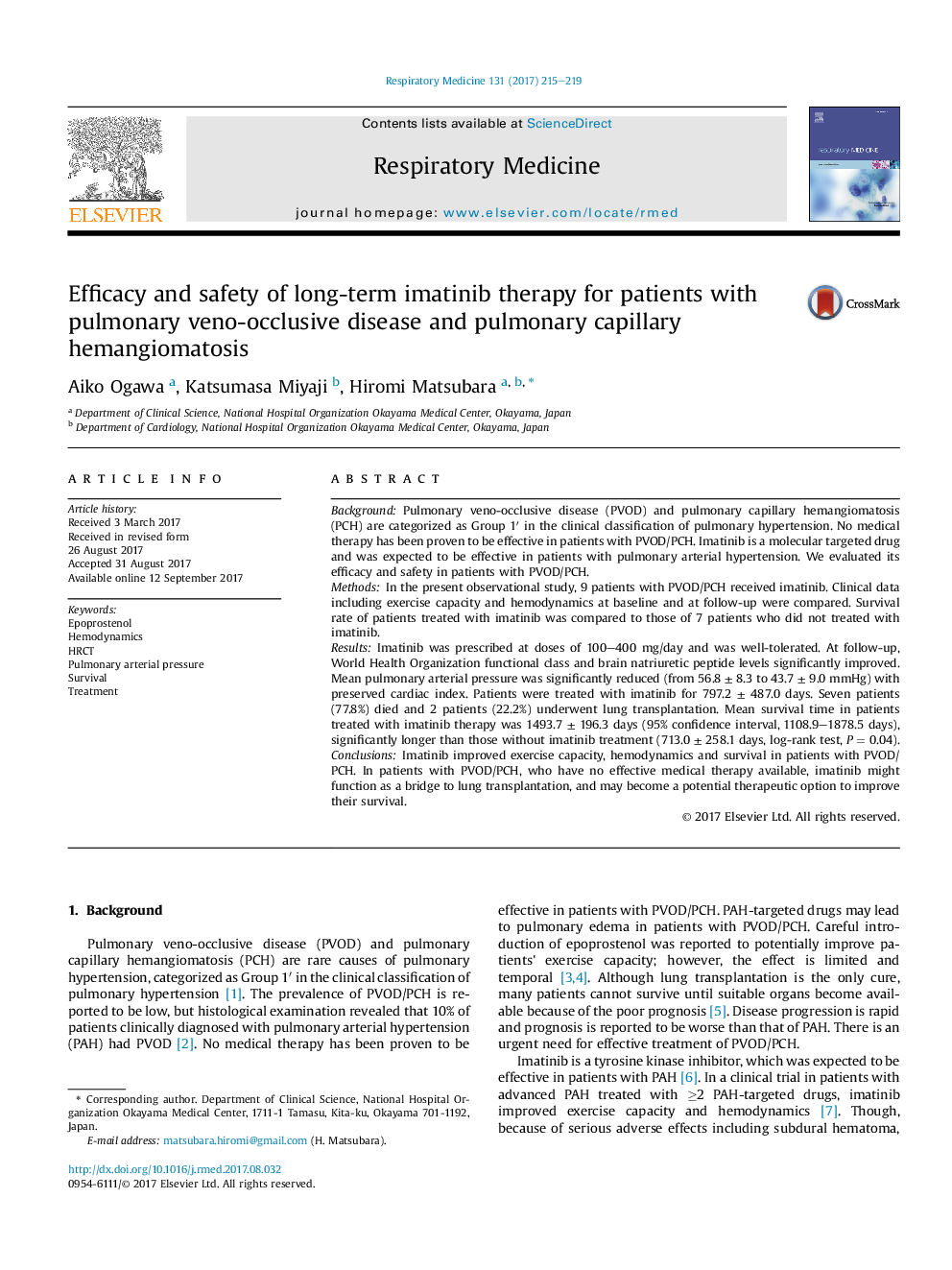| Article ID | Journal | Published Year | Pages | File Type |
|---|---|---|---|---|
| 5724956 | Respiratory Medicine | 2017 | 5 Pages |
â¢No medical therapy has been proven to be effective in patients with PVOD/PCH.â¢Imatinib improved hemodynamics and survival in patients with PVOD/PCH.â¢Imatinib might work as a bridge to lung transplantation and become a potential therapeutic option.
BackgroundPulmonary veno-occlusive disease (PVOD) and pulmonary capillary hemangiomatosis (PCH) are categorized as Group 1Ⲡin the clinical classification of pulmonary hypertension. No medical therapy has been proven to be effective in patients with PVOD/PCH. Imatinib is a molecular targeted drug and was expected to be effective in patients with pulmonary arterial hypertension. We evaluated its efficacy and safety in patients with PVOD/PCH.MethodsIn the present observational study, 9 patients with PVOD/PCH received imatinib. Clinical data including exercise capacity and hemodynamics at baseline and at follow-up were compared. Survival rate of patients treated with imatinib was compared to those of 7 patients who did not treated with imatinib.ResultsImatinib was prescribed at doses of 100-400 mg/day and was well-tolerated. At follow-up, World Health Organization functional class and brain natriuretic peptide levels significantly improved. Mean pulmonary arterial pressure was significantly reduced (from 56.8 ± 8.3 to 43.7 ± 9.0 mmHg) with preserved cardiac index. Patients were treated with imatinib for 797.2 ± 487.0 days. Seven patients (77.8%) died and 2 patients (22.2%) underwent lung transplantation. Mean survival time in patients treated with imatinib therapy was 1493.7 ± 196.3 days (95% confidence interval, 1108.9-1878.5 days), significantly longer than those without imatinib treatment (713.0 ± 258.1 days, log-rank test, P = 0.04).ConclusionsImatinib improved exercise capacity, hemodynamics and survival in patients with PVOD/PCH. In patients with PVOD/PCH, who have no effective medical therapy available, imatinib might function as a bridge to lung transplantation, and may become a potential therapeutic option to improve their survival.
